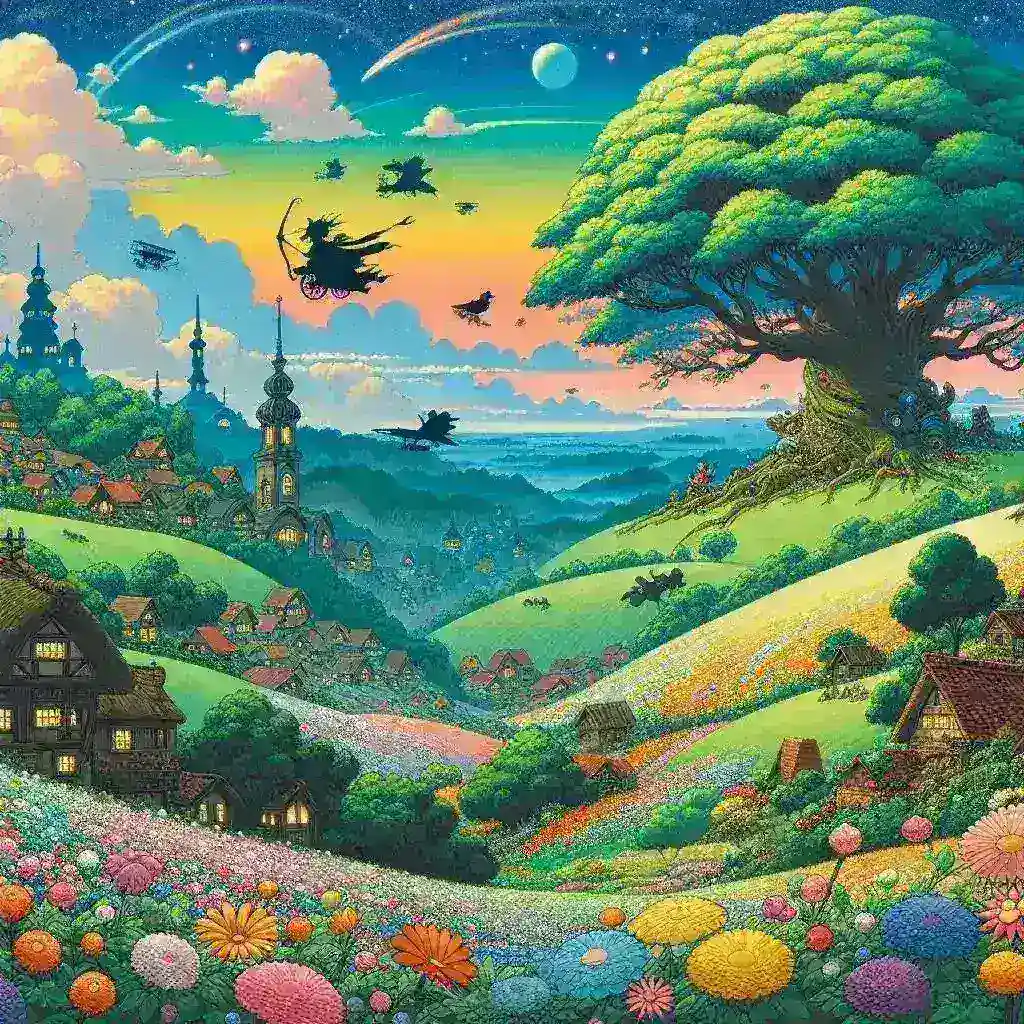ChatGPT’s Ghibli Obsession: A Deep Dive into the Surge of Studio Ghibli-Inspired Art Requests
The digital art world has witnessed a captivating trend: a veritable flood of requests for Studio Ghibli-inspired artwork pouring into ChatGPT, the powerful language model. This isn’t just a fleeting fad; it represents a fascinating intersection of technological advancement, artistic inspiration, and the enduring appeal of Studio Ghibli’s unique animation style. This article delves into the reasons behind this phenomenon, exploring its implications for AI art generation and the broader landscape of digital creativity.
The Allure of Ghibli: A Cultural Phenomenon
Studio Ghibli’s influence transcends mere animation; it’s a cultural touchstone. Hayao Miyazaki’s films, with their breathtaking landscapes, emotionally resonant characters, and timeless storytelling, have captivated audiences worldwide for decades. The distinct aesthetic—characterized by soft lines, vibrant colors, and a palpable sense of wonder—has become instantly recognizable and deeply cherished.
This widespread appreciation explains the surge in Ghibli-inspired art requests. People aren’t just asking for *any* art; they’re seeking to tap into the specific magic of Ghibli. They want the whimsical charm of My Neighbor Totoro, the epic scope of Princess Mononoke, or the poignant beauty of Spirited Away. This desire speaks to the powerful emotional connection people feel with Ghibli’s work.
ChatGPT as a Canvas: AI’s Role in Artistic Expression
ChatGPT’s role in this trend is significant. While it doesn’t create the art itself, it serves as a crucial intermediary, translating complex artistic requests into instructions that can be fed into other AI art generators like Midjourney or DALL-E 2. Users specify their desired Ghibli elements—characters, settings, moods—and ChatGPT crafts the prompts necessary to bring these visions to life. This collaboration between human imagination and AI technology is pushing the boundaries of digital art creation.
Analyzing the Requests: Trends and Patterns
A closer look at the Ghibli-inspired prompts reveals some fascinating patterns. Many requests focus on specific characters, often reimagining them in different contexts or scenarios. Others emphasize recreating iconic Ghibli settings, from the lush forests of Princess Mononoke to the whimsical landscapes of Kiki’s Delivery Service. The common thread is a desire to capture the essence of Ghibli’s artistic style and emotional tone.
Interestingly, many users aren’t just seeking simple recreations. They’re experimenting with blending Ghibli elements with other artistic styles, creating unique hybrids that reflect their own creative visions. This demonstrates the versatility of both ChatGPT and AI art generators as tools for artistic exploration and innovation.
The Implications for the Future of AI Art
The surge in Ghibli-inspired art requests offers valuable insights into the future of AI art. It highlights the growing demand for AI tools that can not only generate images but also understand and interpret complex artistic styles and concepts. The ability to translate nuanced aesthetic preferences into effective prompts is crucial for the continued development of AI art generation.
This trend also raises questions about authorship and originality. As AI tools become more sophisticated, the line between human creativity and AI-assisted creation becomes increasingly blurred. The ethical implications of using AI to generate art in the style of established artists need careful consideration.
Beyond the Hype: A Critical Perspective
While the Ghibli-ChatGPT phenomenon is exciting, a critical perspective is important. While AI can be a powerful tool for artists, it’s not a replacement for human creativity. The true artistry lies in the conceptualization, the emotional depth, and the personal touch that only a human artist can bring. AI can assist in the technical execution, but the heart and soul of the art remain firmly in the hands of the human creator.
The Role of Copyright and Intellectual Property
The use of AI to generate art in the style of existing artists raises crucial copyright and intellectual property concerns. While the AI itself doesn’t directly infringe on copyright, the question remains whether the resulting artwork constitutes derivative work and whether permission from the copyright holders is necessary. This is a complex legal area that requires further exploration and clarification.
Looking Ahead: Predictions and Possibilities
The future of AI-assisted art creation is likely to see even more sophisticated tools capable of understanding and emulating a wider range of artistic styles. We can expect to see further integration of AI into creative workflows, allowing artists to work more efficiently and explore new artistic avenues. However, ethical considerations and the potential impact on human artists will need to be addressed proactively.
Conclusion: A Creative Synergy
The surge in Ghibli-style art requests on ChatGPT reflects a fascinating synergy between human creativity and AI technology. It demonstrates the enduring appeal of Studio Ghibli’s artistic vision and the potential of AI to enhance and expand artistic expression. While challenges and ethical considerations remain, the creative possibilities are immense, promising a future where human and AI collaboration pushes the boundaries of digital art in exciting and unexpected ways. The Ghibli-inspired art boom is not just a trend; it’s a sign of things to come in the ever-evolving landscape of AI-powered creativity.
Further Exploration:
- Explore different AI art generators and experiment with creating your own Ghibli-inspired artwork.
- Research the legal implications of using AI to generate art in the style of existing artists.
- Consider the ethical implications of AI art generation and its potential impact on human artists.

